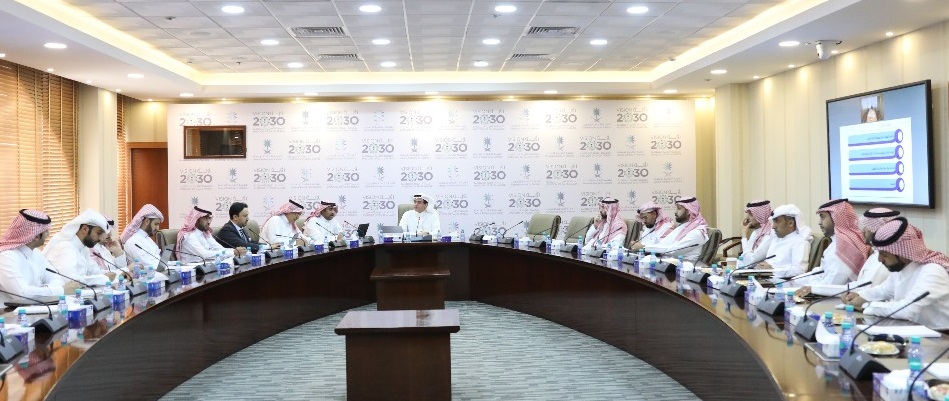
فرق عمل "اللجنة التنسيقية للهيئة العامة للإحصاء" تبحث طرق تبادل البيانات بين الجهات الحكومية
With the participation of 31 government entities over a period of 5 days
The Task Teams of the (Coordination Committee of the General Authority for Statistics) discuss ways of exchanging data between government entities
Within the framework of the General Authority for Statistics' efforts to facilitate and exchange data and information with various government agencies, the coordination committee meetings of the Coordination Committee of the General Authority for Statistics took place during the five days from July 1st to 5th , 2018, with the participation of 31 government entities.
The official spokesman of the General Authority for Statistics, Tayseer Al-Mufrrej, explained that the coordination teams discussed several topics, including the discussion of the general frameworks for the coordination work between the various entities in the joint works. They also reviewed the challenges and obstacles facing the task teams and discussed the appropriate solutions. In addition, they reviewed the statistical work carried out during the last period. The government agencies also made a number of development proposals for data dissemination and raising statistical awareness, in addition to data exchange.
On the other hand, Mr. Al-Mufrrej said that the Coordination Committee of the General Authority for Statistics includes a number of coordination teams, including the coordination Task team for Economic Statistics, which includes, the Ministry of Economy and Planning, the Ministry of Health, the General Authority for Sport, the Ministry of Trade and Investment, the Ministry of Labor and Social Development , Ministry of Energy, Industry and Mineral Resources, Ministry of Finance, Council of Saudi Chambers, Saudi Customs, General Authority for Investment, Saudi Arabian Monetary Agency, General Authority for Tourism and National Heritage, and Small and Medium Enterprises Authority.
The coordination task team on Environment Statistics includes: The Ministry of Municipal and Rural Affairs, the Ministry of Environment, Water and Agriculture, the General Authority for Meteorology and Environmental Protection, Saline water conversion Corporation and the Royal Commission for Jubail and Yanbu.
The coordination task team on Energy Statistics includes: The Ministry of Energy, Industry and Mineral Resources, the Saline Water Conversion Corporation, King Abdullah City for Atomic and Renewable Energy, the Ministry of Energy's National Renewable Energy Program, the Royal Commission for Jubail and Yanbu and the Electricity & Co-Generation Regulatory Authority.
The coordination task team of Masdar program includes: The Ministry of Health, Ministry of Housing, Ministry of Commerce and Investment, Ministry of Education, Ministry of Municipal and Rural Affairs, Ministry of Environment, Water and Agriculture, Ministry of Civil Service, Saudi Arabian Monetary Agency, General Organization for Social Insurance , The Public Pension Agency , the General Auditing Bureau, the Yesr Program, the National Information Center of the Ministry of the Interior, the Ministry of Justice, the Ministry of Economy and Planning, the Ministry of Finance and the Ministry of Labor and Social Development.
While the coordination task team of the social statistics includes: The Ministry of Justice, the Ministry of Housing, the Ministry of Labor and Social Development, the Ministry of Health, the Ministry of Municipal and Rural Affairs, the Public Prosecution, the Ministry of the Interior, the Ministry of Civil Service, the Ministry of Education and the Saudi Post.
It is worth mentioning that the meetings were held as preparatory meetings for the meeting of the Coordination Committee of the General Authority for Statistics, which will be held on the tenth of next September. The "Coordination Committee" was formed permanently to coordinate the statistical work between the General Authority for Statistics and related entities, in accordance with the decision of the Council of Ministers (11) dated 13/1/1437 AH on the organization of the Commission, aimed at activating and organizing the statistical work through the establishment of a comprehensive, accurate and unified statistical system, in addition to the follow-up of its implementation. It also develops the plans and programs necessary to meet statistical needs; in order to serve the developmental plans, scientific research, and various activities.
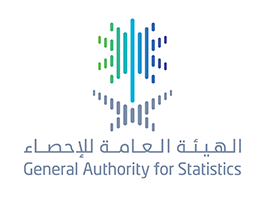
الهيئة العامة للإحصاء: ارتفاع في مُعدَّل المشاركة الاقتصادية للسعوديين، و (6.1٪) مُعدَّل بطالة إجمالي السكان، وبطالة السعوديين: (12.9٪)
A decline in the numbers of non-Saudi workers by more than 234 thousand during Quarter 1, 2018
GASTAT: Saudis economic participation rate increased, total population unemployment rate is (6.1%), and Saudis unemployment rate is (12.9%)
The General Authority for Statistics (GASTAT) published on its official website www.stats.gov.sa the Labor Market Bulletin for the first quarter of 2018, which provides comprehensive data and indicators on the labor market in Saudi Arabia from the estimates of the labor force survey conducted by GASTAT quarterly, in addition to the labor market data from the administrative records of some relevant entities (Ministry of Labor and Social Development, Ministry of Civil Service, General Organization for Social Insurance, Human Resources Development Fund and National Information Center).
The results of the bulletin for the first quarter of 2018 indicated that the total number of workers from the data of administrative records in Saudi Arabia (Q1, 2018) reached (13,333,513) individuals, compared to (13,581,141) individuals in Q4, 2017. However, the first quarter of 2018 witnessed a decrease in the numbers of non-Saudi workers by (234,191) individuals compared to the fourth quarter of 2017, as they registered (10,183,104) individuals in Q1, 2018 compared to (10,417,295) in Q4, 2017. On the other hand, the numbers of Saudi workers registered (3,150,409) individuals.
As for the rate of population’s economic participation (15 years and older), it recorded (55.5%) in Q1, 2018 compared to (55.6%) in Q4, 2017. However, the economic participation rate of Saudis increased by (41.89%) compared to (41.86%) in the previous quarter. Saudi males’ economic participation (15 years and older) increased by (63.5%) compared to (63.4%) in the previous quarter, whereas Saudi females’ economic participation (15 years and older) increased by (19.5%) compared to (19.4%) last quarter.
The results also showed that the rate of population’s unemployment (15 years and older) reached (6.1%) during the first quarter of 2018 compared to (6.0%) in Q4, 2017. Saudis unemployment rate (15 years and older) registered (12.9%) in the first quarter of 2018, but the Saudi females’ unemployment rate has decreased during this quarter registering (30.9%) compared to (31.10%) in Q4, 2017. In contrast, Saudi males’ unemployment rate registered an increase with (7.6%) compared to (7.5%) in Q4, 2017.
In addition, the total number of Saudi jobseekers from the estimates of administrative records (Jadarah, Sa’ed, and Hafiz programs) reached (1,072,162) individuals during the first quarter of 2018 compared to (1,086,561) individuals with a decline by (14,399) individuals from last quarter. Saudi male job seekers recorded (16.1%), while female jobseekers recorded (83.9%).
The bulletin included a large number of detailed data on workers according to the regulations they are subject to, and according to the nationality, gender, age, administrative region and educational level, as well as data on job seekers, average monthly wage, working hours and domestic workers.
On the other hand, GASTAT spokesman Mr. Taiseer Almofarrej, clarified that there is a difference between job seekers and unemployed. The "unemployed" according to the Labor Force Survey are the individuals (15 years and older) who were jobless during the period of the time reference (the survey period): the previous week of the household visit and have been looking for a job seriously during the four weeks prior to the household visit (they have at least taken one way to look for a job). This includes those who did not search for work during the four weeks prior to the household visit because they were waiting for a job or starting their own business in the coming period, where they had already been looking for work before the time reference period and at the same time they were able to work and were ready to join it (If available), during the week preceding the household visit.
Additionally, the definition of job seekers is the Saudi individuals (males or females) enrolled in the job search programs of the Ministry of Civil Service (Jadarah or Sa’ed) and the Human Resources Development Fund (Hafiz). And they register their personal data, qualifications, practical experiences and CVs through an electronic system.
It is worth to mention that job seekers in the administrative records are not subject to the internationally recognized standards and conditions of unemployment approved by the ILO and therefore are not considered to be unemployed. Hence, not every job seeker is considered unemployed, s/he may be looking for work and is working in another job, this is the case in job seekers in government entities who are working, for example, in the private sector.

الهيئة العامة للإحصاء تُجري 5 أعمال إحصائية ميدانية الأسبوع المقبل
Targeting more than 35,000 households and 53,000 Establishments
The General Authority for Statistics is conducting 5 field statistical works next week
The General Authority for Statistics (GASTAT) has invited all citizens and residents, as individuals or in corporations, to cooperate with the statisticians working in the field in various regions of the Kingdom of Saudi Arabia, who their statistical work will start next Tuesday Shawwal 26th,1439AH (July 10th, 2018). GASTAT asserted that all information and data given by citizens, residents and corporations is confidential and will be treated as an information basis which is reliable and can be used by development decision-makers in all relevant government entities that will serve the interest of citizens and residents.
GASTAT spokesman, Mr. Taiseer Almofarrej said that more than (1600) statisticians are conducting 5 social and economic statistical surveys during this period until Dhu Al-Qidah 20th, 1439 AH (August 2nd, 2018). These statistical works are targeting more than 35,000 households and 53,000 establishments in all (13) administrative regions. He mentioned that the field surveys of the economic indicators are used by the decision makers who are involved in the unemployment issue and increasing the employment in the internal trade activity. In addition, the recent statistical data contribute to the knowledge of the volume of internal trade activity and the measurement of its contribution to GDP. He pointed out that the Labor Force Survey helps to extract real indicators and data on unemployment, workers and the economic participation in the Kingdom, as well as data on labor force for the population (15 years old and above). This survey is one of the household field surveys based on a sample, conducted by GASTAT in the field of social statistics. He added that these data are important in terms of giving a picture of the size of the labor force among the working age population of male and female, active and economically inactive.
Mr. Almofarrej mentioned that the field surveys that will be conducted by GASTAT next week by statisticians who are holding official ID cards includes: Industrial Production Survey (3rd quarter, 2018), Economic Indicators Survey (3rd quarter, 2018), Internal Trade Activity Survey (3rd quarter, 2018), Construction Activity Survey 2018, and Tourism Survey 2018.

هيئة الإحصاء تصدر "نشرة سوق العمل" للربع الأول للعام 2018م عبر مؤتمر صحفي الخميس المقبل
GASTAT releases the labour market bulletin (first quarter, 2018) next Thursday in a press conference
The General Authority for Statistics (GASTAT) will hold a press conference next Thursday Shawwal 21, 1439H corresponding July 5, 2018 in its head office in Riyadh. In this conference, GASTAT will announce the labor market bulletin results for the first quarter of 2018. GASTAT spokesman, Mr. Taiseer Almoffarej said that we will announce the population’s total unemployment rate, Saudis’ unemployment rate, and the labor force data of quarter 1, 2018. In addition, the labor market bulletin’s statistical methodology will be explained to all media representatives who are considered essential partners in spreading the statistical data for the remarkable role of media channels in raising statistical awareness among society.
Almofarrej mentioned that GASTAT worked hard to make sure that the bulletin is thorough and includes all data and information needed by GASTAT clients while presenting them in a clear and transparent way which is an important standard of the statistical work.
It is worth mentioning that the labor market bulletin, which is published by GASTAT quarterly, includes the data of labor force, employed and unemployed persons, economic participation and unemployment rate, and job seekers numbers. These data are taken from the administrative records of the Ministry of Labor and Social Development, General Institution of Social Insurances, Human Recourses Fund, and National Information Center.
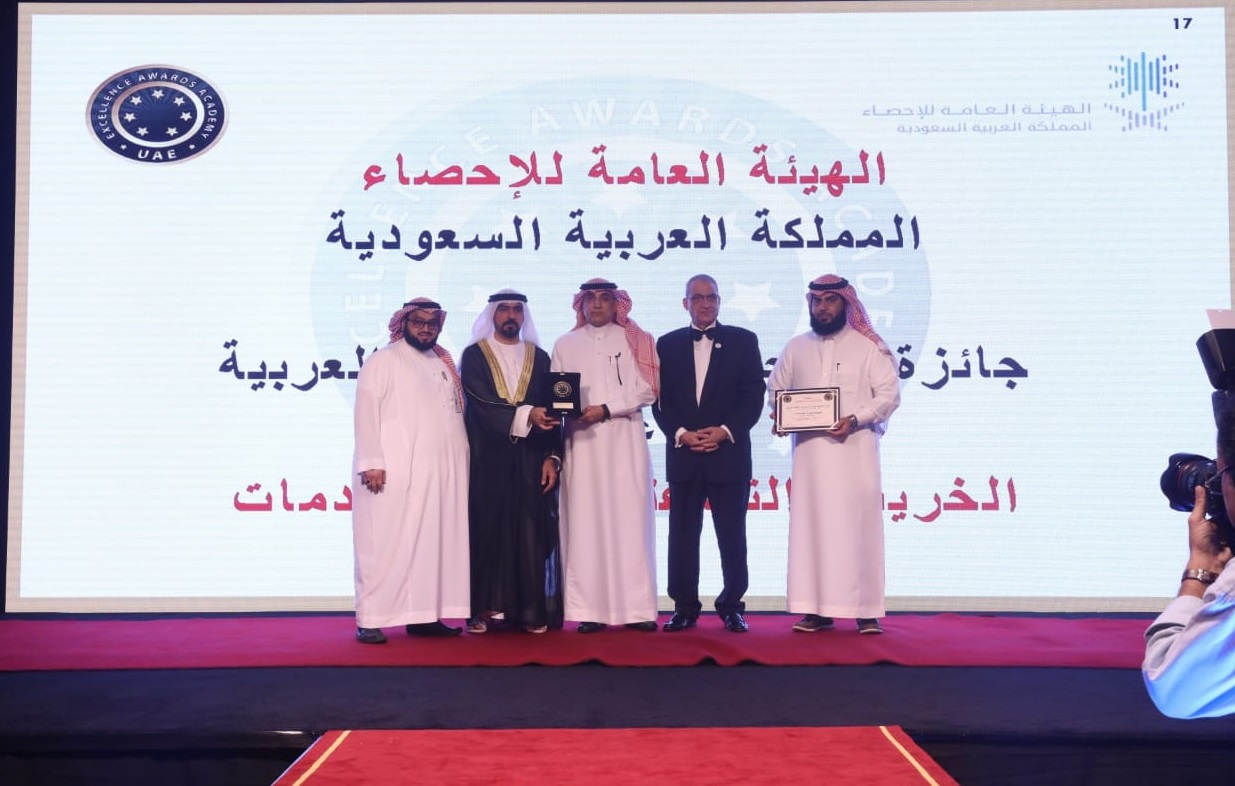
الهيئة العامة للإحصاء تفوز بجائزة الإنجازات الحكومية العربية 2018 م عن خدمة "الخريطة التفاعلية لدليل الخدمات"
Organized by the Excellence Awards Academy at the level of the Arab region
GaStat Wins the Arab Government Achievements Award (2018) for the “Interactive map of the Services Guide”
The General Authority for Statistics (GaStat) won the Arab Government Achievements award for the “Interactive map of the Services Guide” launched recently through GaStat’s official website.
On Tuesday 13/10/1439H., the Excellence Awards Academy in U.A.E, the organizer of the “Afkar” Award for Excellence in Government Innovation for the year 2018 at the level of Arab region, announced selecting the Interactive Map for the Services Guide issued by GaStat, within the top seven excellent services in the region among more than 47 services nominated to win the award.
The Interactive Map of the Services Guide is a technical tool provided by GaStat to view the services’ statistics guide for the Kingdom’s cities and villages. It is the unified reference of all government and private entities available services in different regions of the Kingdom, at the level of cities and villages in the 13 administrative regions. It includes data and information of 16,263 localities (village-city). It includes geographical information and data, Health and education services, data on the availability of administrative, social and agricultural services and public services. The total number of the main tables and its sections included in the guide is (5810) detailed table.
The guide, which was prepared by the contribution of 27 government entities, is one of the most important statistical resources for all data of the Kingdoms’ cities and villages. It is issued by GaStat every 3 years in order to provide unified data and information with official documentation and a high degree of accuracy for all services available in the cities and villages of the Kingdom so that these data are a unified reference for all ministries, government agencies and institutions, students and researchers, and media.
The Interactive map of the Services Guide provides the main data for planners, policy and decision makers according to the localities in the administrative regions. A user can perform a search by selecting the locality that has a specific service in a specific search circle, or selecting the nearest locality on the map. It also provides the possibility of displaying the distribution of services according to the type of service or administrative regions. The service also includes a “Services calculator” which is a statistical tool to conduct statistical calculations based on the databases. The results can be viewed on the map to understand the geospatial distribution of any search, and the results can be extracted on Excel file. The guide contains geographical data and information at the level of the locality (city, village) in addition to the available private and government education services (all three levels and Qura’an schools (boys and girls)), and services of university education, technical education, agricultural education, health education, scientific, professional and commercial institutes, disabled educational institutes, schools of adult education and literacy and kindergartens.
Health services including hospitals, primary health care centers, government and private clinics, Saudi Red Crescent services, data of administrative centers (governorate, center), police and civil defense centers, civil affairs, passports agency, endowments, labor offices, the centres of the General Presidency of the promotion of Virtue and the Prevention of Vices, courts, municipalities Social security offices, social development centers, directorates and branches of the Ministry of Agriculture, branches and offices of agricultural development funds, real estate development, industrial development, , And branches of ministries and agencies as well as public services, including electricity, water, telecommunications, postal services, telegraph offices, tourism, travel and banking services.
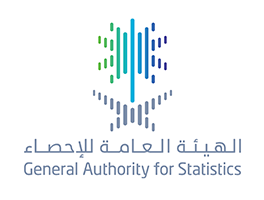
المملكة تشارك في مؤتمر البيانات الضخمة للإحصاءات الأوروبية في بلغاريا
In Order to Benefit from the Best Statistical Practices to Improve the Statistical Sector
Saudi Arabia Participates in the International Conference “Big Data for European Statistics” in Bulgaria
Deputy Chairman of Statistical Innovation and Client Services, Dr.Mohmmad AL-Ahmad represented the General Authority for Statistics (GaStat) in the international conference “Big Data for European Statistics” that was held between 14-15 May 2018 in Sofia, Bulgaria.
Dr.AL-Ahmad clarified that the conference discussed the results of the ESSnet Big Data project; a network project of 22 partners from 20 European countries and it is financed by Eurostat. The project aimed at integrating big data of official statistics through sharing expertise of big data possible sources and creating an implementation plan.
He added that the project started in February 2016 for 28 months until May 2018 and it consists of 10 workgroups: (WP1 to WP8) are for the content, (WP10) is for the coordination and (WP9) is for the entire project.
GaStat accepted the invitation of ESSnet Big Data project in order to learn more about the European countries’ experiences in this field, and to benefit from these practices to serve GaStat’s plans of using big data for producing new statistical indicators in Saudi Arabia. On the other hand, the participants visited the National Statistics Institute NSI in Bulgaria and met Mr. Sergey Tsvetarsky NSI president to view the institute’s activities and statistical works.
GaStat participation in this conference comes within its strategic plans to build international partnership between the Kingdom and a number of distinguished countries in this field, also to benefit from the best international statistical expertise and practices in order to improve the statistical sector in the Kingdom.
GASTAT: More Than 19M Umrah Performers in 2017
(53.6%) Perfom Umrah in Ramadan
GASTAT: More Than 19M Umrah Performers in 2017
On Tuesday Ramadan 13, 1439H corresponding May 29, 2018, The General Authority for Statistics (GASTAT) released the report of Umrah statistics bulletin (2017). It is implemented for the second time by GASTAT as one of the new products associated with the Saudi vision 2030. The report contains many Umrah-related indicators and results which have been taken from the Umrah survey (domestic Umrah performers), and the registered data that pertains to the ministry of Hajj and Umrah (foreign Umrah performers). Through this bulletin, GASTAT and its related governmental partners want to create a database for all domestic and foreign Umrah performers to support decision and policy makers in term of the services provided to Umrah performers.
According to the results of Umrah statistics bulletin 2017, the total number of Umrah performers reached (19.079.306) performers, (6.532.074) of whom came from outside Saudi Arabia as showed in the registered data of the ministry of Hajj and Umrah. On the other hand, the total number of domestic Umrah performers (Saudis and non-Saudis) hit (12.547.232) performers according to the results of Umrah survey conducted by GASTAT. The percentage of Saudi Umrah performers who came from inside Saudi Arabia is (46.9%), whereas non-Saudis who came from inside Saudi Arabia recorded (53.1%). However, the percentage of male domestic Umrah performers registered (64.3%), while females percentage registered (35.7%).
The bulletin results also showed that Ramadan is considered a top season during which Umrah is performed by people from inside Saudi Arabia, as (53.6%) of total Umrah performers performed it in Ramadan. As for Umrah performers from outside, King Abdulaziz airport in Jeddah registered the highest percentage on foreign Umrah performers with (62.51%), while the percentage registered by Prince Mohammed bin Abdulaziz airport in Medina hit (25.7%).
All data of the Umrah survey results are available on GASTAT website www.stats.gov.sa to serve researchers and those who are interested in such data, and to support decision makers by providing them with detailed results.
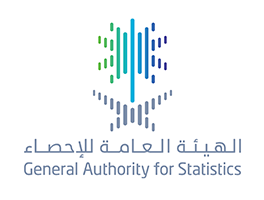
الهيئة العامة للإحصاء تصدر النسخة 53 من الكتاب الإحصائي السنوي 2017م
It includes 20 chapters and data of more than 50 governmental entities
GASTAT releases the 53rd edition of the Statistical Yearbook (2017)
GASTAT released the (53rd) edition of the Statistical Yearbook for 1438/1439 H (2017). It is one of the most important statistical products released by GASTAT to monitor and document statistical data and information, also to shed light on the activities of the governmental bodies and the private sector as well.
Additionally, it reflects the growth rates from year to year and the improvement in the economic, social and population fields. The Statistical Yearbook aims to provide statistical data and information to businessmen, companies, planners, researchers and to the public too. Moreover, it accurately indicates the dimensions of the comprehensive development that were achieved by the Kingdom.
The Statistical Yearbook includes 20 chapters and over 300 tables that contain updated information which were added to improve the display and the documentation of statistical indicators and data. It covers the most significant data and information for different development sectors as well as the main results of the statistical works carried out by GASTAT during the year, also the data received from different statistical departments of more than 50 governmental and private sectors.
Moreover, it includes data about: population and vital characteristic, housing and real-estate, health, training and education, agriculture, water and environment, culture and information, internal trade, social development and services, money, insurance and prices, administrative services, labor market, industry, domestic product and household expenditure, transportation, technology and communication, Islamic affairs, Hajj and Umrah, tourism , entertainment and sport, energy, economic establishments, and data on the budget.
The Statistical Yearbook is not limited to a certain category, for example, the population and vital characteristics chapter is considered one of the significant chapters that includes useful data to conduct a research or to build indicators related to population; and through this, many development requirements can be achieved in all cities and governorates. On the other hand, policy planners and decision makers can benefit from the training and education chapter, the private sector can prepare necessary plans as well to establish more educational institutions. In addition, these data are useful for planners and those who are interested in regulating the labor market.
The social development and services chapter is important for citizens in which it shows the services provided by them. Additionally, this chapter is also useful to social researchers in which it helps them to conduct researches and studies related to social issues.
The findings of the labor market and the social protection’s chapter are very important to prepare plans to regulate the labor market and to find the right solutions. Furthermore, they can be used to conduct economic researches by economists and researches who are interested in this.
Money, insurance and prices chapter can serve a large number of researchers in the economic field to conduct studies that show the inflation rates and the consumption patterns of the population and other indicators.
It is worth mentioning that the first edition of the book was released in 1385 H (1965) and GASTAT usually prepares its chapters based on two main sources: the results of the researches and the field studies carried out by GASTAT and the statistical data received from different statistical departments from various governmental bodies.
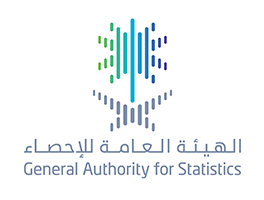
الهيئة العامة للإحصاء: 83.83٪ من إجمالي الأفراد الذين تتراوح أعمارهم من 12 إلى 65 سنة يستخدمون الإنترنت و92٪ يستخدمون الهاتف المتنقل
According to the results of households and individuals’ ICT access and usage survey 2017
GASTAT: 83.83% of individuals (12 to 65 years) use internet, and 92% use cell phone
On Thursday 24th of Sha’aban 1439 H corresponding 10th of May 2018, the General Authority for Statistics has released the report of households and individuals’ ICT access and usage survey results 2017. This report aims at providing recent data and indicators about the communication and information technology activity, which helps decision makers in obtaining necessary statistical data. In addition, it helps in founding a wide range data base that can be used as a reliable reference for ICT activity’ studies and research. It also provides researchers and students with statistical data about the households and individuals ICT activity, so that they can use it in their scientific studies and research that contribute in developing this activity in Saudi Arabia. Not to mention its role in making local, regional, and international comparisons in the households and individuals ICT activity.
Based on the survey results, the percentage of households who can access the internet reached 86.8%. however, households who have fixed phone in their dwellings registered 24.74%. on the other hand, individuals who use the internet recorded 68.13% of total Saudi population, whereas 83.83% of individuals whose ages range between (12 and 65 years) use the internet. As for cell phones, the percentage of individuals who use cell phones is 73.28% of total Saudi population. 91% of individuals whose ages range between (12 and 65 years) use cell phones.
According to the results of this survey, the percentage of households who have a computer in their dwellings reached 46.6% of total Saudi population. However, individuals who use computers registered 24.69%, whereas 30% of total individuals whose ages range between (12 and 65 years) use computers. As for the percentage of households who have a television, they registered 92.67% of total Saudi population.
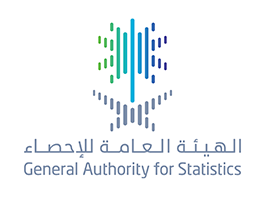
الهيئة العامة للإحصاء تُجري (12) عملاً إحصائياً ميدانياً تستمر حتى مطلع شهر رمضان
Targeting (57350 households) and (33450 establishments)
GASTAT conducts (12) statistical works that last until the beginning of Ramadan
The General Authority for Statistics (GASTAT) has asked all citizens and residents whether individuals or institutions to cooperate with its statisticians who work in the field all over Saudi Arabia, and their work would last until the beginning of Ramadan. GASTAT asserted that all data are dealt with as an information base that developmental decision makers, who work in all related governmental entities, would rely on.
GASTAT spokesman, Mr. Taiseer Almofarrej said that (11317) statisticians are conducting (12) statistical research and surveys in many economic and social fields, and their works will last until the second of Ramadan. These statistical works are targeting (57350 households) and (33450 establishments) in all (13) administrative regions including all cities and governorates.
The results of these works represent a base for making the related developmental decisions. On the level of statistical works that target households, GASTAT is currently conducting the households and individuals’ ICT access and usage survey 2018, the household and population characteristics survey 2018, and the labor force survey, Q2 of 2018.
On the other hand, Almofarrej clarified that the general statistics system issued by the ministers’ cabinet, all data and information provided by any citizen, resident, or establishment are kept and dealt with confidentiality. He added that the people’s cooperation with statisticians would guarantee the success of these works, and using them in supporting economic and social development accordingly.
It is worth mentioning that GASTAT is following certified international standards in choosing the sample of these works. Thus, GASTAT asks all individuals in the statistical society, either households or establishments, to cooperate with the statistician who can be identified by his official card. In addition, there is a communication center that everyone contacts on 920020081

الهيئة العامة للاحصاء تشارك في الدورة السابعة للجنة الإحصائية لمنظمة التعاون الاسلامي
GASTAT participates in the seventh round of OIC-StatCom
The General Authority for Statistics (GASTAT) participates in the meetings of the seventh round of the Organization of Islamic Cooperation Statistical Commission (OIC-StatCom), which are held in Ankara- Turkey, during the period 2-3 May, 2018, corresponding 16-17 Shaaban, 1439H. On the first day of the meetings, the director- general of Methodologies and Statistical Classifications has presented in details how to use administrative records and vital statistics in the next population census which will be conducted in 2020. On the other hand, the vice president for Statistical Works has met the director- general of Statistical, Economic, and Social Research and Training Center for Islamic Countries (SESRIC),
Ambassador Musa KulaKlikaya. During their meeting, they shed light on GASTAT statistical transformation experience, and how can they reflect the experience of Saudi Arabia on other Islamic countries. Moreover, the vice president, and on behalf of all GASTAT staff, has expressed his thanks and gratitude for all the efforts exerted by the center. He assured that the authority can always provide support in different statistical fields. In the end, the center’s director-general has thanked the authority for their initiative, and expressed the center’s desire to sign a memorandum of understanding with GASTAT in the field of statistics.
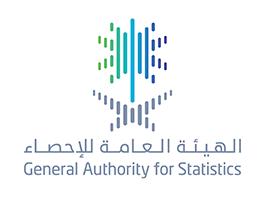
الهيئة العامة للإحصاء : وفق مسح ممارسة الرياضة للأسر بالمملكة ( 14.89% ) من السكان يمارسون الرياضة لأكثر من 150 دقيقة في الأسبوع
New survey to be released for the first time in cooperation with the General Sports Authority,
GASTAT: According to the survey of Households Sports Practice in Saudi Arabia (14.89%) of population are practicing sports for more than 150 minutes’ weekly
On Tuesday 15th of Shaaban 1439H, corresponding to 1st of May 2018, GASTAT has released the results of Households Sports Practice Survey, 2017. The survey complements the surveys implemented by GASTAT in 2017. Households sports practice is one of the Saudi vision 2030 requirements. In addition, this kind of practice includes indicators that are targeted by 2030. The data of this survey allows conducting many developmental studies and plans in general, and in the sports field in particular. These studies and plans should support the development of many programs and initiatives that do increase the rate of households sports practice. The survey methodology and form must be compatible with the international standards and recommendations issued by ILO on one hand, and with the General Sports Authority needs on the other hand.
According to the survey results, the percentage of individuals (15 years and older) who are engaged in sports activities for more than 150 minutes weekly reached (14.89%). However, those who do not practice sports recorded (85.11%). Moreover, the percentage of Saudi males and females (15 years and older) who are engaged in sports activities for more than 150 minutes’ weekly registered (11.24%), (8.83%) of whom are males and (2.41%) are females. On the other hand, the percentage of non-Saudi males and females who are engaged in sports activities hit (3.65%).
The results also indicated that the percentage of those who practice sports in public facilities (public place, garden…etc) is 59.04%. in contrast, those who practice sports in GYMs registered 15.11%, while those who practice it at home recorded 14.75%. Additionally, the percentage of individuals who practice sports in clubs recorded 1.63%, whereas those who practice it in other places registered only 1.19%
The survey revealed that the reasons of not practicing sports among Saudi population varied. Some people have chosen not to practice it with a percentage of 50.47%, and some do not have time to practice (32.11%). However, some people do not have public facilities in their neighbourhoods (14.65%), and some have other reasons for not practicing (2.77%).
The survey aims at providing recent statistical indicators and data about households’ sports practice. In addition, it provides the reasons behind not practicing sports by kind of relationship with the household head, and classification by gender, nationality, educational status, age, marital status. Furthermore, it provides data about the percentages of individuals engaged in sports activities on at the administrative regions level.
GASTAT will work on improving the survey indicators periodically in cooperation with the General Sports Authority, in a way that supports the 2030 Saudi vision achievement.
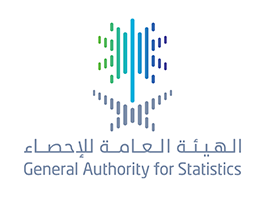
الهيئة العامة للإحصاء: ارتفاع مُعدَّل المشاركة الاقتصادية، واستقرارٌ في مُعدَّل البطالة بين السعوديين
Within the results of labor market bulletin, quarter 4, 2017
GASTAT: Saudis’ economic participation rate increased, and unemployment rate remained stable
The General Authority for Statistics (GASTAT) releases on its official website www.stats.gov.sa the Labor Market Bulletin for the fourth quarter of 2017, which provides comprehensive data and indicators on the Saudi labor market taken from the labor force survey conducted by the Authority on a quarterly basis, and from the administrative records of some relevant entities (Ministry of Labor and Social Development, Ministry of Civil Service, General Organization for Social Insurance, Human Resources Development Fund and National Information Center).
The results of the bulletin (third quarter, 2017) showed an increase in the economic participation of Saudis (15 years and older) as it reached (41.9%) compared to (40.7%) in Quarter 3, 2017, with an increase of (1.2%). The results indicated that the economic participation of Saudi females has increased by (19.4%) compared to (17.8%), whereas, Saudi males’ participation has increased by (63.4%) compared to (62.6%) in the third quarter of 2017. However, the results demonstrated a stability in the unemployment rate of the Saudi population for the third time, where it stabilized at (12.8%), the unemployment rate of all population (Saudis and non-Saudis) has registered (6.0%), with an increase of (0.2%) compared to the previous quarter. The results also showed a decline in the unemployment rate of Saudi with (31.0%) compared to (32.7%) in quarter 3. On the other hand, Saudi males’ unemployment rate has registered an increase by (7. 5%) compared to (7.4%) in quarter 3. Moreover, the results indicated that according to the administrative records of Saudi Arabia, there is a decline in the numbers of Saudi job seekers during the fourth quarter of 2017, as they reached (1,086,561) persons with a decline of (11.8%) compared to the third quarter of 2017. In contrast, the numbers of Saudi employed persons have increased by (3.3%) with (3,163,846) persons.
The bulletin included a large number of detailed data about workers according to the regulations they are subject to, nationality, gender, age, administrative region, and educational level, as well as data about job seekers, average monthly wage, working hours and domestic workers.
On the other hand, the official spokesman of the General Authority for Statistics (GASTAT), Taiseer Al-Mofarrej, clarified that when comparing the unemployment rate of total population ( Saudis and non-Saudis) in Saudi Arabia, which registered (6%) in this quarter, with the unemployment rates of the Group of Twenty (G20), we find that Saudi Arabia is in the average rate, as ten countries among which is Saudi Arabia has registered rates ranging between (4%) and (7%). The below table shows the unemployment rates of G20:
Unemployment rates in G20
Country
Unemployment rate
South Africa
26.7
Brazil
12.6
Italy
10.9
Turkey
10.8
France
8.9
Argentina
7.2
Canada
5.8
Saudi Arabia
6
Australia
5.5
Indonesia
5.5
Russia
5.0
South Korea
4.5
United Kingdom
4.2
United States
4.1
China
3.9
Germany
3.8
India
3.5
Mexico
3.2
Japan
2.5
Almofarrej added, the results of the labor market bulletin, Quarter 4, 2017 have showed the tendencies of jobseekers in the Saudi market, as the percentage of those who seek a government job reached 38%.
It is worth mentioning that GASATAT has previously clarified the difference between job seekers and unemployed, and that unemployment rate cannot be calculated based on the number of jobseekers that is registered in the databases of other government entities. The "unemployed" according to the Labor Force Survey are individuals (15 years and older) who were jobless during the period of the time reference (the survey period): the previous week of the household visit and have been looking for a job seriously during the four weeks prior to the household visit (they have at least taken one way to look for a job). This includes those who did not search for jobs during the four weeks prior to the household visit because they were waiting for a job or starting their own business in the coming period, where they had already been looking for work before the time reference period and at the same time they were able to work and were ready to join it (If available), during the week preceding the household visit.
Additionally, jobseekers can be defined as Saudi individuals (males or females) enrolled in the job search programs of the Ministry of Civil Service (Jadarah or Saa’ed) and the Human Resources Development Fund (Hafiz), and they register their personal data, qualifications, practical experiences and CVs through an electronic system.
Not to mention that job seekers in the administrative records are not subject to the internationally recognized standards and conditions of unemployment approved by the ILO, and therefore are not considered to be unemployed. Hence, not every job seeker is considered unemployed, S/he may be looking for work and is working in another job, this is the case in those who seek a government job and are working, for example, in the private sector and not registered in the records of the General Organization of Social Insurance (GOSI), as if there is a jobseeker and s/he works in the private sector and subscribed in GOSI, s/he ca not be considered within jobseekers in the labor market bulletin.
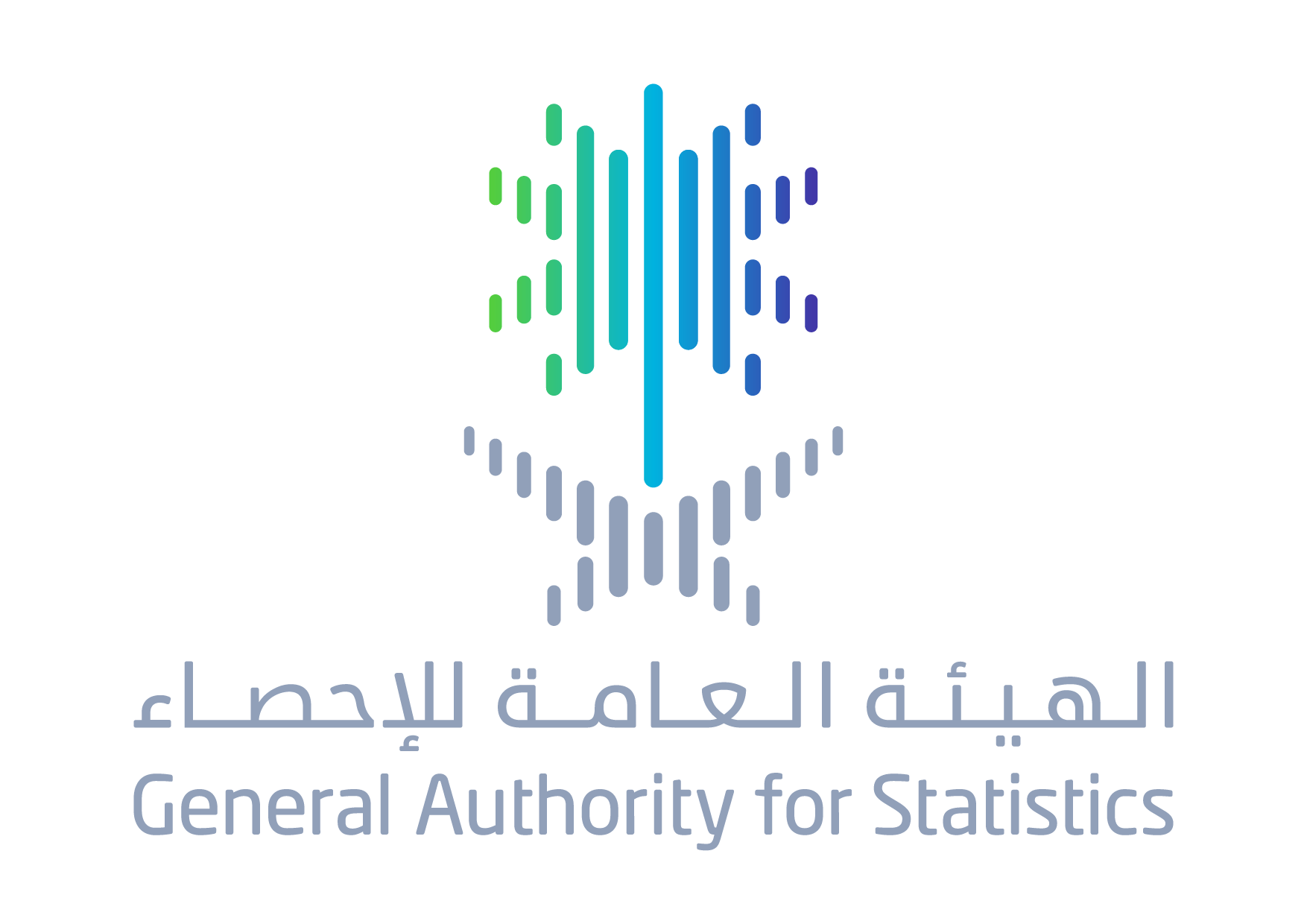
الهيئة العامة للإحصاء: انخفاض مؤشر أسعار العقارات خلال الربع الأول 2018
GaStat: A Decline in the Real-Estate Price Indicator During the First Quarter of 2018
On Monday, the 7th of Shaaban 1439H corresponding April 23, 2018, The General Authority for Statistics (GaStat) released the report of Real Estate Price index, Q1 2018. The report is published on GaStat official website www.stats.gov.sa.com .Furthermore, the indicator is based on the data records about real-estate’s transactions available at the Ministry of Justice, and it is an important tool to support economic and statistical decision makers regarding the changes of property prices and future forecasts during different periods of time.
According to the report, the real-estate price index has recorded a decline by (1.5%) compared to the same quarter of last year (Q1, 2017). The report attributed this decline to the decrease in the main sectors composing it: the housing sector (2.0%), the commercial sector (4.4%), and the agricultural sector (0.4%).
Moreover, the indicator edged down (0.5%) compared to the previous quarter (Q4 2017) reaching (84.2%) in the first quarter of 2018 compared to (84.6%) for the previous quarter. This decline can be attributed to the main sectors composing it where they witnessed varying degrees of decline: (0.7%) for the housing sector, (0.5%) for the commercial sector and (0.1%) for the agricultural sector.
It is worth mentioning that the indicator of the Real Estate Price index, which aims at founding outstanding real-estate statistical indicators that measure the performance of Saudi real-estate market and meeting the data needs in this sector, covers three main sectors consisting of several types of real estate: housing sector which includes the following (plot of land, building, villa, apartment and house), commercial sector includes (plot of land, building, exhibition, commercial center or shop), agricultural sector with one category which is the agricultural land.
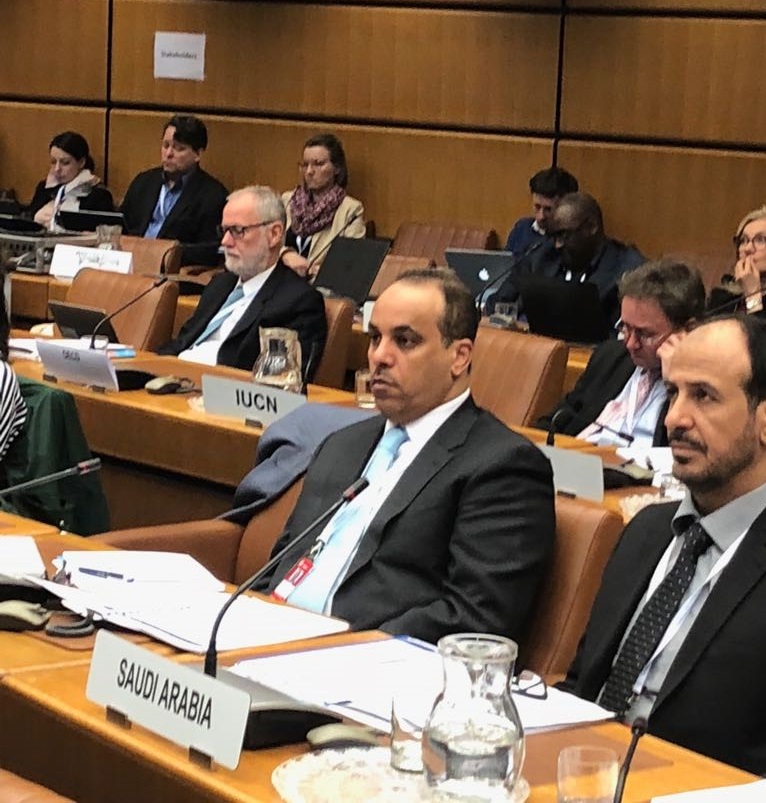
المملكة تختتم مشاركتها في أعمال الاجتماع السابع للمنظمات الدولية المشاركة ومجموعة الخبراء لمؤشرات أهداف التنمية المستدامة
The General Authority for Statistics (GaStat) is the responsible entity for building indicators of the Kingdom's sustainable development goals
The kingdom concludes its participation in the 7th meeting for the participated international organizations and the experts team of the sustainable development goals’ indicators
The kingdom concludes its participation in the 7th meeting for the participated international organizations and the experts team of the sustainable development goals’ indicators. This meeting was hosted by the United Nations Industrial Development Organization (UNIDO) between 9-13 of April to review the classifications of the sustainable development goals, discuss the implementation of the guidelines of data flow, report the global data, document the best practices in reporting the global data, and to review a number of suggestions to obtain additional indicators for the sustainable development.
The president of GaStat, HE Dr.Fahad bin Sulaiman AL-Tekhaifi , who headed the Saudi delegation participating in the meetings, affirmed that Saudi Arabia is one of the countries that made significant progress in achieving the goals of the sustainable development, since that GaStat is the official entity responsible for building indicators of sustainable development in accordance with the governance of the work of statistical entities accredited to all countries to enable access to data of the index production. And that is through making a plan to collect the data of the index production whether by the implemented surveys, implementing new surveys, adding new questions to the existing surveys, or through the administrative records. in addition, identifying the government entities that produce data related to those indicators and follow-up the international and regional work of the sustainable development goals in particular and other development goals in general. HE added that GaStat has the membership of the regional committee which includes the Standing Committee for Progress Indicators and Sustainability 2030 of the GCC statistical centre. GaStat has also examined the current situation of the sustainable development goals 2030, identified its sources and availability in the Kingdom, as well as its periodicity, coverage and classification.
It is worth mentioning that The United Nations General Assembly in partnership with the member countries, international organizations and civil society have identified (17) goals, (169) purposes and more than (2440 indicators for the sustainable development, and have also established the Inter-Agency Expert Group for the Indicators of Sustainable Development Goals (IAEG-SDGs) on 6 March 2015, which is composed of member countries, including regional and international agencies. The Kingdom of Saudi Arabia, represented by GaStat, participates in all meetings of committees and organizations related to sustainable development.

الهيئة العامة للإحصاء تثمِّن انعقاد الملتقى الثاني للجمعية السعودية للعلوم الإحصائية وتؤكد أهميته
To be organized by King Khalid University on the 8th of Shaaban
GaStat is stressing on the importance of the second symposium of the Saudi Association for Statistical Sciences
The General Authority for Statistics (GaStat) is stressing on the significant role of the academic sector as it represents one of the four main components of the Saudi statistical sector, which consists also of GaStat, and the statistical units in the public and private sectors. The vice president of statistical innovation and customer service, Dr. Mohammed Alahmed said that the second symposium of the Saudi association for statistical sciences, which will be held on 8/8/1439 H, and organized by King Khalid University under the patronage of the president of King Khalid University, Dr. Falleh bin Raja Allah Al-Solamy, entitled “ The Role of Statistics in Big Data Revolution” is one of the plans that GaStat works on to activate the role of the academic sector including the universities, faculty members, and students. In this respect, he indicated that GaStat is implementing many projects and programs in cooperation with many universities for the purpose of involving the all statistical divisions in the future plan of statistics in Saudi Arabia.
It is worth mentioning that the second symposium of the Saudi association for statistical sciences which will involve a number of scientific lectures presented by some statisticians is considered a good opportunity for all those who are interested in statistics, so they can nominate themselves to the association’s board of directors through convening a general meeting which is preceded by a number of activities.
The Saudi association for statistical sciences was established at King Khalid University in 1425 H. it was established to achieve a clear vision through which the association can participate in developing the Saudi society. This association seeks to create means of communication between those specializing in statistics through convening and organizing seminars and conferences, in addition to building statistical software and technologies, working on new statistical teaching methods, and providing consultations and applied scientific studies for the public and private sectors. It also seeks to support and promote cooperation between researchers in different fields of the statistical sciences inside and outside the Kingdom.
Moreover, The Saudi association for statistical sciences seeks to apply its ambitious plan after restructuring its board of directors during the symposium. This plan is represented in holding international conferences and national seminars within the frame of its approach, which attempts to improve the scientific research in the field of statistics. The association also works on developing the statistical field and activating its role in the society. In addition, it seeks to achieve a scientific communication between its members, strengthen its relations with the universities and the other Saudi institutions, exchange the scientific production and ideas between the scientific authorities and institutions inside and outside Saudi Arabia, in addition to opening other branches of the association in some Saudi universities.

الهيئة العامة للإحصاء وجامعة الملك سعود تؤسسان المرصد الوطني لمشاركة المرأة في التنمية
To build detailed indicators that observe woman’s participation in development
GaStat and KSU Establish National Observatory for Woman's Participation in Development (NOW)
GaStat has signed a memorandum of understanding with King Saud University KSU as part of its policy to meet the needs of customers in the public and private sectors and to establish effective partnerships with all relevant parties, and as part of its attempts to provide innovative statistical products in accordance with international standards; in addition to its efforts to develop the necessary indicators for future and current needs. Moreover, the signing was within the agenda of the first conference of the National Observatory for Women (NOW) titled "The role of women in development towards a thriving economy" which will end on Thursday 19 of Rajab 1439H. The conference aims to evaluate and enhance the role of women in development as well as identifying detailed indicators for their participation in the development fields.
The memorandum was signed by GaStat and KSU with the presence of HE the Minister of Labor and Social Development. It seeks to a cooperation with the Authority within the scope of work of “NOW”; specifically, in building detailed indicators to observe those participations. It also aims to update the indicators periodically, prepare and implement statistical studies to support and improve woman’s participation in development. The memorandum also calls for unifying the efforts and data sources as well as maintaining the security and privacy of data; delivering them to decision makers and beneficiaries based on agreed standards. Additionally, the memorandum requires cooperation and integration between GaStat and NOW to provide electronic services through data exchange to serve the public interest and that is within the authorities of GaStat and NOW.
As a result, GaStat will provide NOW with the related statistical data to build the indicators of woman’s participation in development especially that increasing the woman’s participation is one of the objectives of the Kingdom’s vision 2030. The memorandum also indicates the cooperation between GaStat and NOW to exchange data as well as economic and development statistical indicators that support the work of NOW through (GSN).
On the other hand, the president of GaStat Dr.Fahad bin Sulaiman AL-Tekhaifi confirmed that signing the memorandum of understanding with KSU comes within the framework of GaStat to achieve the statistical transformation in the Kingdom and he also stressed on the importance of the partnership of the academic sector with government entities. Moreover, his excellency explained that NOW has appeared along with the transformations witnessed by the national economy from restructuring and building economic base that relies on diversity and optimal utilization of the great potentials of Saudi woman.
Dr.AL-Tekhaifi indicated that government entities are living in an exceptional stage of support with the availability of participatory tools for the development journey, and that NOW will deeply analyze the statistics related to woman’s participation in development in all its areas to support policy and decision makers.
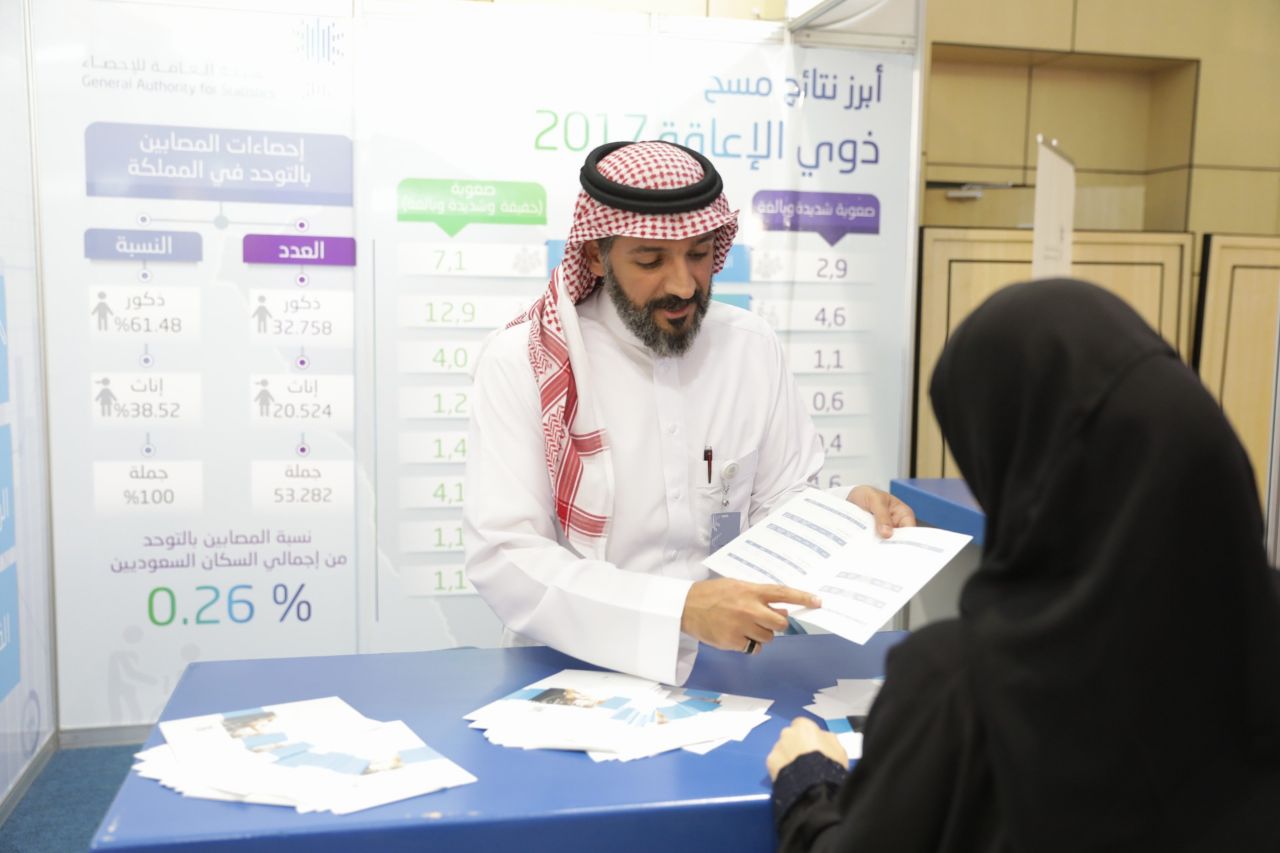
الهيئة العامة للإحصاء : (2.9 %) نسبة انتشار الإعاقة ذات الصعوبة ( البالغة ) بين السكان السعوديين

الهيئة العامة للإحصاء : متوسط معدل النمو السنوي للسكان بالمملكة 2.52%
According to the population characteristics survey, July 2017
GaStat: Population annual growth rate in Saudi Arabia is 2.52%
The General Authority for Statistics (GaStat) indicated that during the previous period, the authority has conducted a set of population statistics surveys, last of which was the population characteristics survey which has been implemented on the field during the period from 17/7/1438 H to 22/8/1438 H corresponding 14/4/2017 to 18/5/2017.
GaStat spokesman, Taiseer Almufarrij said that according to the population characteristics survey2017, the number of Saudi Arabia’s population is (32552336) compared to (31742038) which is the number registered in the demographic survey 2016, with a growth rate of (2.52%). The population are distributed by gender (57.48%) males, and (42.52%) females in 2017 (1438H). those percentages are similar to the percentages of 2016’s survey where males registered (57.44%) and females registered (42.56%). According to 2016 survey results, the number of Saudi population was estimated at (20,064,970) with an increase of (343.392) persons. However, Saudi population are distributed by gender with (50.95%) males and (49.06%) females in 2017 (1438H). those percentages are similar to the percentages of 2016’s survey where males registered (50.96%) and females registered (49.04%).
Almufarrij added that the survey contained households’ data including the marital status, educational status, demographic structure of Saudi and non-Saudi population on the level of Saudi administrative regions. Through the survey, many indicators were extracted such as mortality rate, population’ age and gender structure, and levels of marriage and divorce.
On the other hand, GaStat has started working with specialists and experts from some governmental entities and followed a number of steps in preparation for 2020-1441 H census. The data of this census includes demographic, economic, and educational characteristics of population, dwelling characteristics that are represented in the geographical and distinct data, and dwelling housing characteristics.

الهيئة العامة للإحصاء: ملاحظات الشورى حول التقرير السنوي محل اهتمامنا وعنايتنا
Shura Council confirms that it agrees with the transformation program of the statistical sector
The General Authority for Statistics (GaStat): Shura's Comments about the Annual Report Are of Our Concern
GaStat thanked the Chairman of the Shura Council and all the members for their comments and suggestions about the work of the Authority at its twenty-fifth meeting of the second year of the seventh session, in which the Council discussed the annual report of GaStat for the fiscal year 1437/1438.
The official spokesman of the Authority, Mr. Tayseer Al-Mufrraj, said that GaStat is committed to consider the comments to deepen the positive impact in the development of the statistical sector in the Kingdom and to lead the statistical work.
He stressed that the comments made by the members of the Shura Council are in line with the transformation program of the statistical sector carried out by the Authority.
